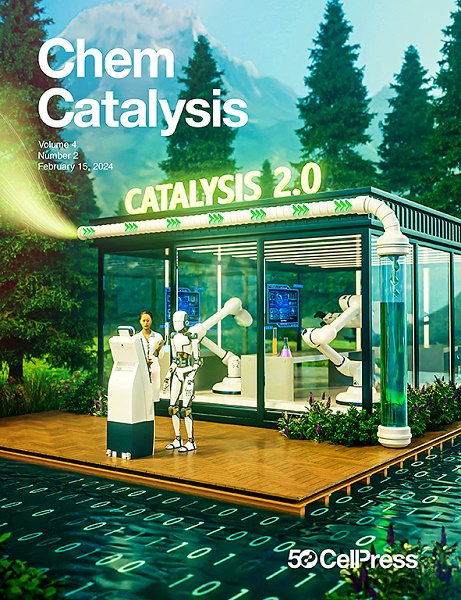Dual atomic Cu sites enable CO2-to-C2+ conversion in strong acid
IF 11.5
Q1 CHEMISTRY, PHYSICAL
引用次数: 0
Abstract
As reported recently in Nature Synthesis, Sargent and co-workers have developed tandem electrocatalysts for CO2 reduction by combining planar Cu (which converts CO2 to CO) and dual-atomic-site catalysts (which produce hydrocarbons, such as ethylene and ethanol). This system achieves 46% ethanol Faradaic efficiency and 91% C2+ efficiency at 150 mA cm−2 under acidic conditions, advancing sustainable CO2 conversion.双原子Cu位点使co2在强酸中转化为c2 +
正如最近在《自然合成》杂志上报道的那样,萨金特和同事们通过结合平面铜(将二氧化碳转化为CO)和双原子位催化剂(产生碳氢化合物,如乙烯和乙醇),开发出了用于二氧化碳还原的串联电催化剂。在酸性条件下,该体系在150 mA cm - 2下的乙醇法拉第效率为46%,C2+效率为91%,促进了二氧化碳的可持续转化。
本文章由计算机程序翻译,如有差异,请以英文原文为准。
求助全文
约1分钟内获得全文
求助全文
来源期刊
CiteScore
10.50
自引率
6.40%
发文量
0
期刊介绍:
Chem Catalysis is a monthly journal that publishes innovative research on fundamental and applied catalysis, providing a platform for researchers across chemistry, chemical engineering, and related fields. It serves as a premier resource for scientists and engineers in academia and industry, covering heterogeneous, homogeneous, and biocatalysis. Emphasizing transformative methods and technologies, the journal aims to advance understanding, introduce novel catalysts, and connect fundamental insights to real-world applications for societal benefit.

 求助内容:
求助内容: 应助结果提醒方式:
应助结果提醒方式:


